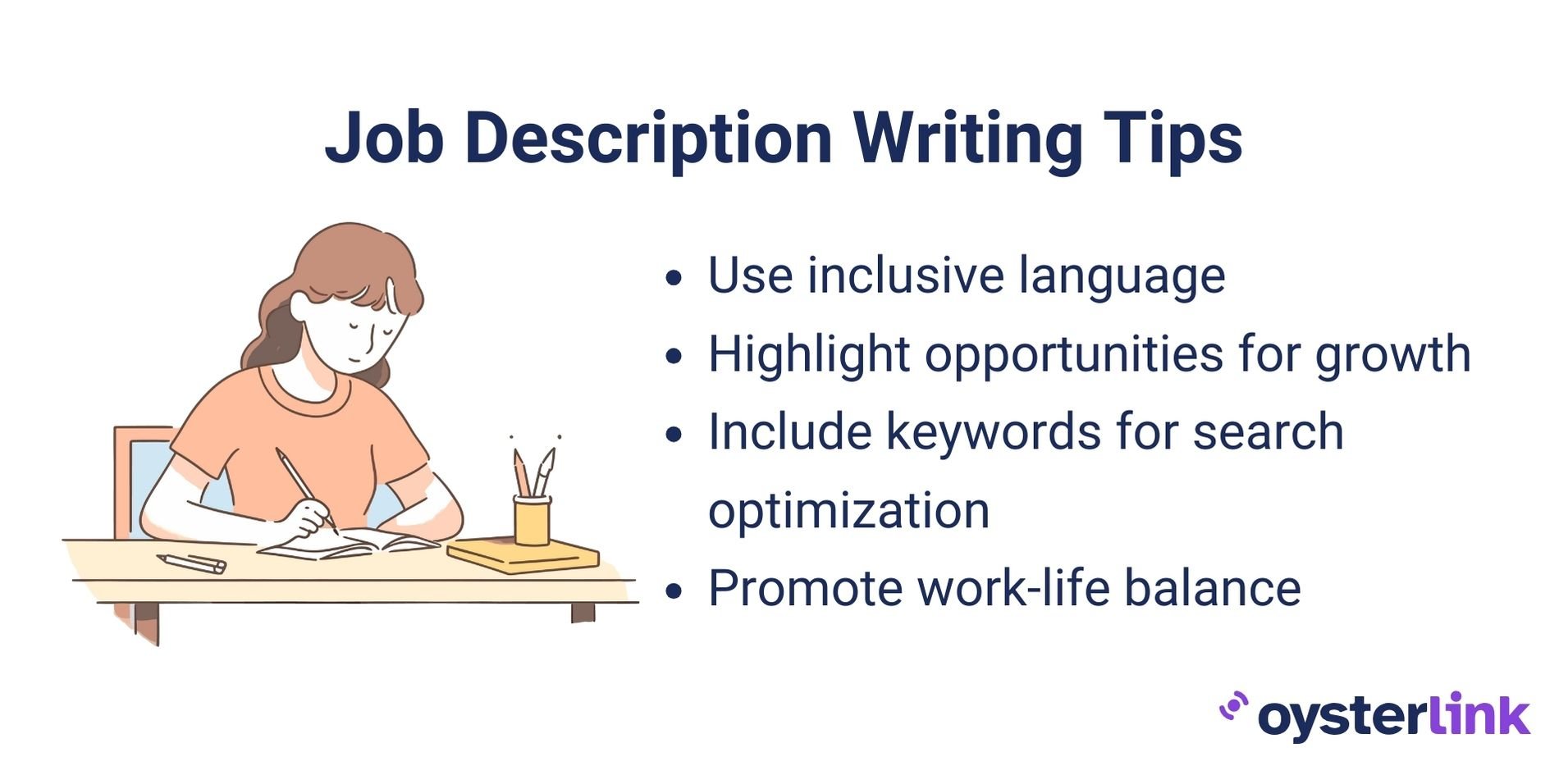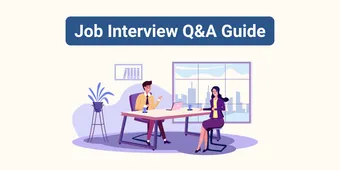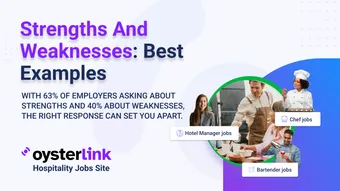How To Write a Job Description: 3 Key Takeaways
- With 8.7M openings and only 5.3M seekers in 2023, a clear, compelling description helps draw in the right candidates.
- When writing a job description, you want to include duties, qualifications, and legal-safe language to avoid misunderstandings.
- Clear expectations reduce unqualified applicants (a top issue for 73% of recruiters) and support better retention.
Writing a job description isn’t just about listing duties—it’s about crafting a strategic tool that attracts the right candidates.
In this guide, you’ll learn exactly what to include, what to avoid, and how to make every word count.
What Is a Job Description?
A job description summarizes the nature of the job, responsibilities, salary expectations, skills and qualifications.
Aside from outlining the role and core tasks, it’s also an applicant’s first introduction to your company, including your mission, culture and employee benefits.
When crafting your job description, keep in mind that it serves as the initial impression applicants get of your company, introducing them to your mission, culture and benefits.
The way you present the role can either draw in your ideal candidate or potentially discourage them.
Interestingly, a study indicates that 52% of job seekers consider the job description’s quality as a significant factor influencing their decision to apply for a position.
So, ensuring your job description resonates positively with potential candidates is key to attracting the right talent.
Why do you need a job description?
Every company and organization should post and have a job description for each position.
There are several reasons that make this practice beneficial for employers and applicants.
These include:
- Clear expectations: An effective job description guides employers and candidates, letting both know exactly what is expected in this role.
Recruitment: An effective job description includes details such as salary, responsibilities, benefits and requirements.
This is especially important considering that 73% of recruiters struggle with too many applications from unqualified candidates.
- Employee accountability: Job descriptions can be used as a reference point once the candidate is hired.
During evaluation periods, an employer can assess the candidate’s performance and how well they performed based on the expectations from the JD.
- Legal compliance: Job descriptions can also serve as an important legal document in cases where employees take legal action against the company.
- Additional training: Job descriptions include all responsibilities within a role.
As such, when comparing the expectations against interested candidates, job descriptions can point out where qualified candidates might need additional skills and training.
Job description vs. job responsibilities
While a job descriptionencompasses all the aspects related to the role, job responsibilities refer to the duties associated with the role.
They include common duties and day-to-day activities that make the job what it is.
While a job description includes duties, job responsibilities offer a fuller and more nuanced look at what the employee will be expected to do daily.
How To Write a Job Description in 8 Easy Steps
With these easy-to-follow guidelines, you’ll write a job description that grabs attention and gets the job done!
1. Write a clear job title
- Choose a clear job title: Select a job title that accurately reflects the role’s nature and seniority level.
Avoid vague or overly complex titles. Example: Instead of Manager, write Digital Marketing Manager.
- Include seniority level (optional): If relevant, add a term like “Junior,” “Senior” or “Entry-Level” to indicate the position’s level.
Example: Senior Software Developer
2. Craft a compelling job summary
Highlight key responsibilities: Summarize the primary tasks and objectives of the role in 2–3 sentences.
- Example: As a Digital Marketing Manager, you will lead our online marketing efforts, including SEO, SEM and social media campaigns.
Convey impact: Mention how the role contributes to the company’s goals or mission.
- Example: Your work will drive brand visibility and customer engagement, ultimately boosting online sales.
3. Describe your company accurately
Define your company’s identity:
Mission: Begin by stating your organization’s mission, which encapsulates its purpose and primary goals.
- Example: At XYZ Inc., our mission is to revolutionize the way people interact with technology, making it more accessible and user-friendly.
Values: Describe the core values that guide your company’s actions and decisions.
- Example: Our company values include innovation, integrity and teamwork. These principles shape everything we do.
Culture: Offer insights into your company’s workplace culture, such as its atmosphere, collaboration style and employee interactions.
- Example: We foster a dynamic and collaborative work environment where every team member’s voice is heard and innovation is celebrated.
Highlight unique selling points:
Flexible work policies: Mention specific policies or benefits that make your company stand out.
- Example: Our company’s flexible remote work policy allows employees to find a healthy work-life balance, providing the freedom to choose where they work best.
Employee growth: Highlight your commitment to employee development and career advancement.
- Example: What truly differentiates us is our dedication to employee growth. We offer ongoing training, mentorship programs and clear pathways for career advancement.
Achievements: If applicable, showcase any awards, recognitions or notable achievements that emphasize your company’s excellence.
- Example: We’re honored to have received the “Innovator of the Year” award for our groundbreaking contributions to the industry.
This reflects our commitment to pushing the boundaries of technology.
4. Legal considerations in job descriptions
When crafting job descriptions, it's essential to ensure compliance with employment laws to avoid potential legal issues:
- Non-Discriminatory Language: Use inclusive language that avoids discrimination based on race, gender, age, religion, or disability.
For example, instead of "seeking young and energetic individuals," use "seeking enthusiastic individuals."
- Essential Functions: Clearly outline the essential functions of the job to comply with the Americans with Disabilities Act (ADA).
This clarity helps in determining reasonable accommodations for individuals with disabilities.
- Avoiding Implied Contracts: Be cautious with language that could be interpreted as creating an employment contract.
Avoid definitive terms like "will" or "shall" and opt for "may" or "responsible for."
5. Outline responsibilities and duties
List essential tasks: Outline the core responsibilities in a bulleted list for clarity.
Here are examples of responsibilities and duties for a waitress.
Example:
- Greet and seat guests courteously.
- Take food and beverage orders, ensuring accuracy.
- Communicate with and relay orders to the kitchen staff.
- Maintain a clean and tidy dining area.
- Handle customer inquiries and process payments.
Also, mention potential career advancement opportunities within the company to attract ambitious candidates.
For example, "This role offers a clear pathway to managerial positions within the department."
6. Specify qualifications
List mandatory qualifications: Write down the essential qualifications, such as education, certifications or experience.
Example:
- Strong communication and customer service skills.
- Previous restaurant or customer service experience.
- Ability to stand for extended periods and lift items.
- Knowledge of food safety and hygiene.
- High school diploma or equivalent.
Also, make sure to include relevant keywords. Incorporate industry-specific keywords that potential candidates are likely to search for.
This practice enhances the visibility of your job posting in search engine results.
Example:
- Experience with point-of-sale (POS) systems.
- Certification in responsible alcohol service.
- Familiarity with the menu.
- Multilingual abilities to assist diverse customers.
7. Explain the reporting structure
Identify the immediate supervisor: Mention the title and department of the role’s direct manager.
- Example: Reports to the Marketing Director.
Note any supervisory responsibilities (if applicable): Indicate if the role involves managing other team members.
- Example: Oversees a team of three digital marketers.
8. Detail compensation and benefits
Provide salary range: Specify the expected salary range for the position.
- Example: Competitive salary range of $65,000–$83,000 per year.
List benefits: Highlight the benefits package, including health insurance, paid holidays, retirement plans, wage increase schemes and unique perks.
- Example: Comprehensive health coverage, 401(k) matching and monthly wellness stipend.
By following these steps and including relevant details, your job description will be clear, informative and appealing to potential candidates.
Tips for Writing a Job Description That Attracts Top Talent
Creating a good job description is vital when looking to attract top talent.
To help you do it right, here are some important things you should and shouldn’t do.

Use inclusive language
Do use gender-neutral language and avoid any terms that may inadvertently exclude certain demographics.
Inclusivity promotes diversity and attracts a wider range of candidates.
- Example: Instead of salesman, use salesperson or sales representative.
Highlight opportunities for growth
Do mention opportunities for career advancement and growth within the company.
Candidates often seek roles that offer long-term development.
- Example: This position provides a clear pathway for career advancement within our organization.
Include keywords for search optimization
To maximize your job description's reach and effectiveness, consider these optimization strategies:
- Use SEO-friendly keywords: Incorporate relevant industry keywords to ensure your job post ranks higher on search engines and job boards.
- Keep it mobile-friendly: Many job seekers browse job listings on their phones. Use short paragraphs, bullet points, and clear formatting to enhance readability.
- Leverage job board features: Platforms like Indeed and LinkedIn offer tagging, category selections, and paid promotion options to increase visibility.
- Include a strong call-to-action (CTA): Encourage applications by stating “Apply Today” or “Join Our Team – Apply Now” at the end of the listing.
Promote work-life balance
Do highlight any work-life balance initiatives or policies, especially if your company offers flexible work arrangements or remote options.
- Example: Our company values work-life balance, offering flexible scheduling and remote work opportunities.
Common Mistakes to Avoid When Writing a Job Description
You can encounter many pitfalls when writing a job description.
Avoiding them will help you attract the most qualified candidates and fill out the position you are seeking.
That is why we created this list of things to avoid when writing a job description for your organization.
Avoid a laundry list of duties
Be clear and concise when writing the list of duties; you don’t want to confuse applicants.
Considering that the most effective job descriptions have between 700 and 2,000 characters, you want to make the most of it.
Write the core duties and responsibilities and avoid going into unnecessary details.
Use clear, specific terms
Ambiguous language can confuse potential applicants.
By writing the job descriptions in a clear and simple way, you increase your chances of hiring candidates that best align with your open role.
Avoid requiring excessive experience
While it is important to find candidates that have relevant experience, setting too stringent expectations might deter brilliant who could excel in the role with the right training.
Consider internal candidates
When opening a position, you want to craft a job description in a way that would encourage current employees to apply.
While an external hire may bring new perspective, on average, external hires cost 18% more than internal hires.
Additionally, someone who’s been with your company for long might need less onboarding/training compared to a potential external hire.
Conclusion: From Job Description Template to Posting Success
Crafting a strong job description is more than just listing duties.
It’s about attracting the right candidates, setting clear expectations, and showcasing what makes your company unique.
A well-written job description ensures that you not only find skilled professionals but also individuals who align with your company culture and long-term goals.
By following these steps and avoiding common mistakes, you’ll create job postings that engage, inform, and motivate the best talent to apply.











Loading comments...